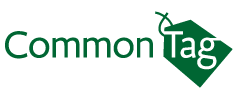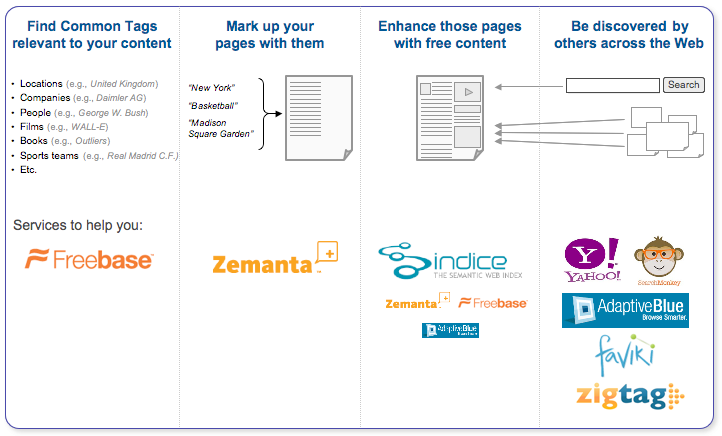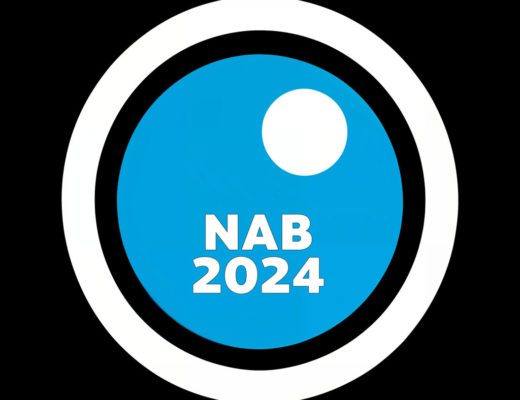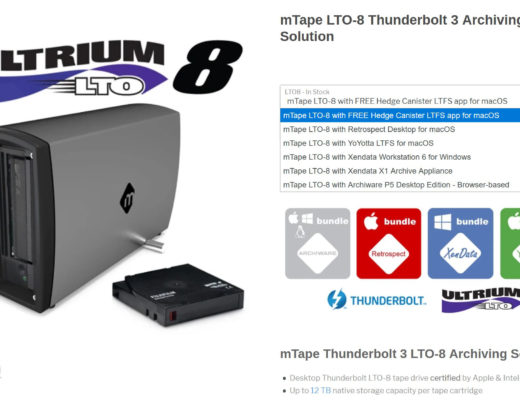 People usetags to organize, share and discover content on the Web. However, in the absence of a common tagging format, the benefits of tagging have been limited. Individual things like New York City are often represented by multiple tags (like “nyc”, “new_york_city”, and “newyork”), making it difficult to organize related content; and it isn’t always clear what a particular tag represents—does the tag “jaguar” represent the animal, the car company, or the operating system?
People usetags to organize, share and discover content on the Web. However, in the absence of a common tagging format, the benefits of tagging have been limited. Individual things like New York City are often represented by multiple tags (like “nyc”, “new_york_city”, and “newyork”), making it difficult to organize related content; and it isn’t always clear what a particular tag represents—does the tag “jaguar” represent the animal, the car company, or the operating system?
TheCommon Tag format
The Common Tag format was developed to address the current shortcomings of tagging and help everyone—including end users, publishers, and developers—get more out of Web content. With Common Tag, content is tagged with unique, well-defined concepts – everything about New York City is tagged with one concept for New York City and everything about jaguar the animal is tagged with one concept for jaguar the animal. Common Tag also provides access to useful metadata that defines each concept and describes how the concepts relate to one another. For example, metadata for the Barack Obama Common Tag indicates that he’s the President of the United States and that he’s married to Michelle Obama.
Why use Common Tag?
As more publishers, developers and end users join in supporting the Common Tag format, content across the Web will benefit by becoming:
- –More discoverable: Over time, more and more content related to a specific concept will be discoverable through a single tag. As application developers rely more on Common Tag, they’ll deliver more related content to their users and in turn drive more traffic to publishers that use Common Tag. Services like DERI’s Sindice.com provide developers with tools to find and incorporate related content into their applications using Common Tag. In addition, search engines like Yahoo and Google have begun readingRDFa—the markup standard used by the Common Tag format—to acquire richer information about sites that use it. Yahoo! SearchMonkey uses this information to improve the presentation (and in the future, the relevance) of publishers’ search results in Yahoo!, helping drive more traffic to their sites; and Google’s new Rich Snippets feature uses the information to apply similar enhancements to Google search results.
- –More connected: All content related to a particular concept is connected and organized by a single tag, both within individual sites and across the Web. What’s more, Common Tag metadata connects concepts to one another, allowing publishers and developers to present end users with even more related content. For example, a publisher might cross-promote content about Katie Holmes on a page featuring content about Tom Cruise because Common Tag indicates that the two are related by marriage.
- –More engaging: Common Tag is a format that’s understandable by machines, which allows publishers and developers to build more engaging features and applications around content tagged with Common Tag. When an application can understand what a piece of content is about with certainty, it’s able to provide users with a more compelling experience. For example, a developer might create a simple application that takes an article about the new Star Trek movie and allows users to purchase tickets to the movie directly within the article. Since both the publisher and ticket service use Common Tag, the application is able to easily make the connection without having to guess at what the content of the two services is about.
More information about Common Tag
To learn more, please see theQuick Start Guide,full technical specification or find out how toget involved!

Filmtools
Filmmakers go-to destination for pre-production, production & post production equipment!
Shop Now

![The limitations of tagging 9 Reblog this post [with Zemanta]](http://img.zemanta.com/reblog_c.png?x-id=f93b3bd6-57f5-46be-8d6c-ddc0c42d6057)













